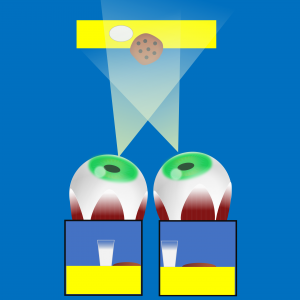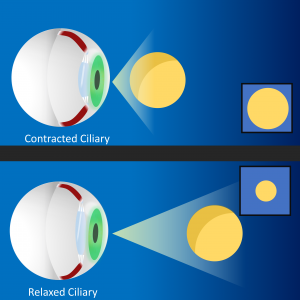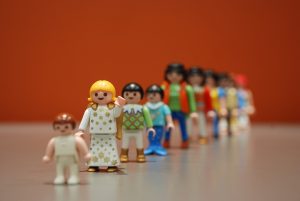Color, Depth, and Size
109 Oculomotor and Monocular Depth Cues
Learning Objectives
Understand what oculomotor depth cues are.
Be able to briefly describe what oculomotor muscles and ciliary muscles do.
Be able to list and explain at least 6 monocular depth cues.
Oculomotor depth cues are proprioceptive information from oculomotor muscles and ciliary muscles. Oculomotor muscles are the muscles that rotate the eyeballs for them to converge at a depth (fig.10.6.1). Ciliary muscles are the muscles that change the focal length by compressing the lens of the eye.

Monocular depth cues are depth cues that are able to be perceived without both eyes. Some monocular depth cues include, but are not limited to:
- Relative Height: Things at a distance look like their base is higher.
- Relative Size: Objects farther away from other objects are smaller (Fig.10.6.2).
- Occlusion: Things will get in front of other things.
- Shadows: Relative height and depth.
- Texture Gradient: Textures look finer as they draw back.
- Atmospheric Perspective: Things that are far away look hazy or out of focus.



Take a peak at these websites to learn more about monocular and binocular oculomotor cues.
Cheryl Olman PSY 3031 Detailed Outline
Provided by: University of Minnesota
Download for free at http://vision.psych.umn.edu/users/caolman/courses/PSY3031/
License of original source: CC Attribution 4.0
Adapted by: Madelynn Gibbons

